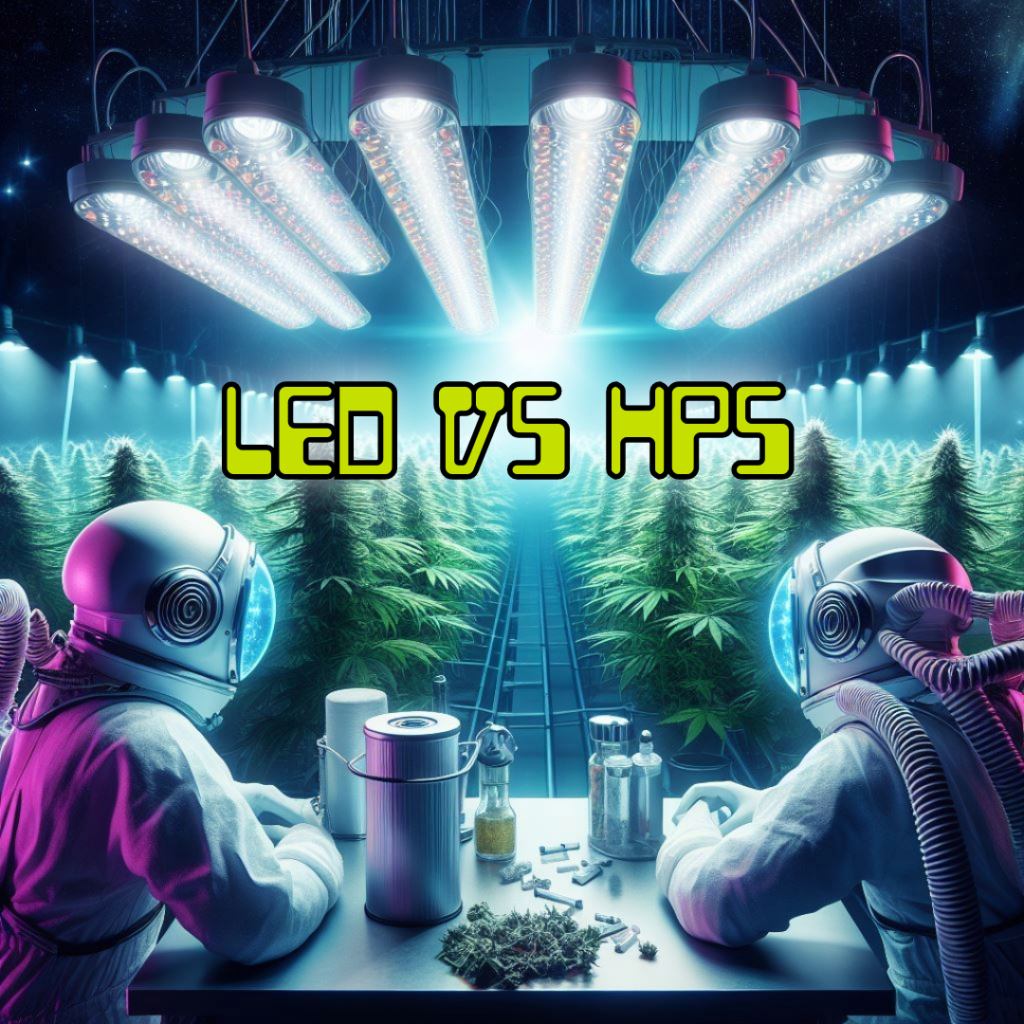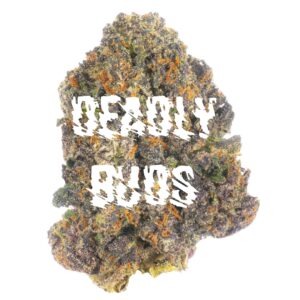Through our journey of processing Live Cured Flower, we’ve dealt with both LED and HPS cultivated flower. I want to take some time to go over the benefits of each one and then give you some insight into what I think is the best.
High-Pressure Sodium (HPS) lamps are a type of high-intensity discharge (HID) lighting commonly used in cannabis cultivation. These lights are particularly popular for the flowering stage of cannabis plants due to their spectrum, which is rich in the red and orange wavelengths that are crucial for flowering cannabis plants.
Here are some key characteristics of HPS lights used during cultivation:
- Efficiency: While HPS lights are effective for flowering, they are less energy-efficient compared to LED lights. They produce a significant amount of heat, and a portion of the energy is emitted as infrared radiation, which is not directly used by plants for photosynthesis.
- Spectrum: HPS lights emit light in the yellow, orange, and red parts of the spectrum, with a peak in the red-orange range. This spectrum is ideal for the flowering stage of cannabis plants because it promotes bud development and flowering.
- Heat Output: HPS lights generate a substantial amount of heat, and cultivators need to implement adequate ventilation and cooling systems to manage the temperature in the grow space. Excessive heat can lead to stress in plants and may require additional climate control measures.
- Lifespan: The lifespan of HPS bulbs is shorter compared to LED lights. Over time, HPS bulbs can experience a decrease in output, and they need to be replaced after a certain number of hours of use.
- Cost: While the initial cost of HPS systems may be lower than some LED systems, the overall operational costs, including energy consumption and bulb replacements, can be higher in the long run.
- Suitability for Flowering: HPS lights are especially favored during the flowering phase of cannabis cultivation. Many growers use a combination of metal halide (MH) lights for the vegetative stage and HPS lights for flowering to provide a more balanced spectrum throughout the plant’s life cycle.
HPS lights continue to be used successfully by many cannabis cultivators, especially those who have established systems and infrastructure based on this traditional lighting technology. The yield with HPS lights is known as being high and it’s hard to move many people towards new LED technology based on this outdated notion.
There are many LED lights designed specifically for the cultivation of cannabis plants. These lights use light-emitting diodes (LEDs) as the source of illumination, providing a spectrum of light that is suitable for the various stages of cannabis growth, including germination, vegetative growth, and flowering.
LED lights have become popular in cannabis cultivation for several reasons:
- Efficiency: LED lights are energy-efficient compared to traditional lighting sources like high-pressure sodium (HPS) or metal halide (MH) lamps. They emit light in specific wavelengths, allowing cultivators to tailor the spectrum to the needs of the plants. The money saved in the long run is one thing that is turning cultivators towards LEDs.
- Spectrum: LED lights can be designed to emit light in specific spectra, mimicking the natural light spectrum that plants utilize for photosynthesis. This enables cultivators to optimize light conditions for different growth stages. For example, a higher amount of red light will help during the flowering stage, but too much will cause photobleaching on the tips of the calyces found on the buds.
- Heat Output: LED lights generate less heat compared to traditional lighting sources. This is beneficial for indoor cannabis cultivation because it helps maintain a more controlled and stable environment, preventing excessive heat stress on plants and keeping down the costs of cooling.
- Lifespan: LED lights have a longer lifespan than traditional lights, reducing the frequency of replacements and overall operating costs.
- Space Efficiency: LEDs can be designed in compact and customizable configurations, making them suitable for various cultivation setups, including small home grow spaces or large vertical farming systems.
While the initial cost of investing in a LED lighting system is high, the benefits of efficiency and environmental control out way the cost. It’s worth looking deeper into this new technology since I feel like it may be the way of the future.
Someone that I look up to in the world of LED research is Dr. Bruce Bugbee. He is a well-known researcher in the field of plant physiology and crop science, and he has conducted studies on various aspects of plant growth, including the effects of LED lighting on hemp. His research has contributed valuable insights into optimizing light conditions for plant growth, especially in controlled environments like indoor cultivation facilities. I mean he’s been working with NASA for 30 years to develop ways to cultivate on other planets – The guy knows his shit. A broad overview of the things he’s been researching are as follows:
- Spectrum: Bugbee and other researchers working with him have explored how different light spectra, achievable with LED technology, can influence the growth, development, and cannabinoid production in hemp plants. Tailoring the light spectrum to the specific needs of different growth stages is a key focus. It’s fascinating to hear his descriptions of how photons affect the plants’ growth.
- Efficiency: LED lighting is often praised for its energy efficiency compared to traditional lighting sources. Dr. Bugbee has investigated the energy-saving benefits of LED systems for hemp cultivation. He’s studied the most efficient ways to cultivate on other planets and how to optimize its efficiency.
- Cannabinoid Production: Hemp is cultivated not only for fiber and seed but also for cannabinoids like CBD. Studies have examined how specific light spectra, intensities, and durations influence cannabinoid content in hemp plants. Dr. Bugbee’s department at USU processes the hemp into CBD oil and then passes it off to Professor Karen Wilcox, chair of the University of Utah’s Department of Pharmacology and Toxicology. From there the cannabinoids are studied.
- Yield and Quality: LED lighting studies on hemp include assessments of overall yield, plant morphology, and the quality of harvested material. This includes considerations of THC levels, which are regulated by federal law, something that the university must adhere to.
- Environmental Control: LED systems can provide precise control over light, allowing researchers to investigate the impact of light intensity, duration, and spectrum on hemp growth. This is crucial in optimizing indoor cultivation environments.
To access the specific studies and findings by Dr. Bruce Bugbee, I’d recommend checking out his scientific journals or the official website of Utah State University, where Dr. Bugbee is associated. He’s got a really great YouTube channel that breaks down some of his research which is really worth a watch.
I personally feel that LED lighting provides so many benefits that it outweighs the pros of using HPS lamps. While the quality and yield of the flower can be argued, it’s hard to deny the efficiency and climate control that LED systems offer. By looking into the studies of Dr. Bugbee, I think you’ll agree that this may be the superior indoor lighting system
Stay safe and stay stoned!


